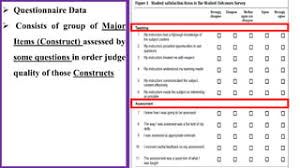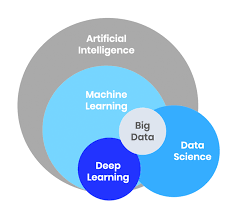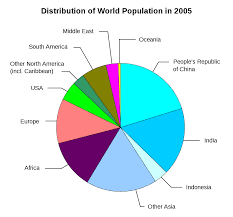Statistical Analysis of Questionnaire Data
Questionnaires are a valuable tool for collecting data and insights from a sample population. Once the data is gathered, statistical analysis plays a crucial role in interpreting the results and drawing meaningful conclusions. Here’s a closer look at how statistical analysis is applied to questionnaire data:
Data Cleaning and Preparation
Before conducting any statistical analysis, it is essential to clean and prepare the questionnaire data. This involves checking for missing or erroneous responses, ensuring consistency in coding, and transforming raw data into a format suitable for analysis.
Descriptive Statistics
Descriptive statistics provide an overview of the key characteristics of the data. This includes measures such as mean, median, mode, standard deviation, and variance. Descriptive statistics help summarise the central tendency, dispersion, and shape of the data distribution.
Inferential Statistics
Inferential statistics are used to make inferences or predictions about a larger population based on the sample data collected through the questionnaire. Common inferential techniques include hypothesis testing, regression analysis, correlation analysis, and analysis of variance (ANOVA).
Data Visualisation
Data visualisation techniques such as histograms, bar charts, scatter plots, and box plots can help present the findings from questionnaire data in a clear and understandable manner. Visual representations make it easier to identify patterns, trends, and relationships within the data.
Interpreting Results
Once the statistical analysis is complete, it is crucial to interpret the results in the context of the research objectives. Researchers should assess the significance of findings, draw conclusions supported by evidence from the data analysis, and consider implications for decision-making or further research.
Conclusion
Statistical analysis of questionnaire data provides valuable insights that can inform decision-making processes across various fields such as market research, social sciences, healthcare, and more. By applying rigorous statistical methods to analyse questionnaire responses effectively, researchers can uncover meaningful patterns and trends that contribute to knowledge advancement.
Essential Statistical Methods for Analysing Questionnaire Data: A Guide to Best Practices and Tools
- What is the best data analysis method for a questionnaire?
- What statistical test to use for a questionnaire?
- What is statistical treatment of data for questionnaire?
- What are the statistical tools used in questionnaire analysis?
- How to statistically analyse a questionnaire?
- What type of statistical analysis is used for questionnaires?
- How do you statistically analyze questionnaire data?
What is the best data analysis method for a questionnaire?
When considering the best data analysis method for a questionnaire, researchers often look for a technique that aligns with the research objectives and the type of data collected. Commonly used methods include descriptive statistics to summarise key characteristics, inferential statistics for making predictions about a larger population, and data visualisation techniques to present findings effectively. The choice of method depends on the research questions being addressed, the nature of the variables in the questionnaire, and the level of precision required in drawing conclusions from the data. Researchers may also consider factors such as sample size, data distribution, and the specific goals of the study when selecting the most appropriate data analysis method for a questionnaire.
What statistical test to use for a questionnaire?
When determining the appropriate statistical test to use for analysing questionnaire data, it is essential to consider the research objectives and the nature of the data collected. The choice of statistical test depends on various factors, such as the type of variables (categorical or continuous), the research design (e.g., cross-sectional or longitudinal), and the specific hypotheses being tested. Common statistical tests for questionnaire data include t-tests for comparing means between two groups, ANOVA for comparing means across multiple groups, correlation analysis to examine relationships between variables, and regression analysis to predict outcomes based on predictor variables. Selecting the right statistical test is crucial to ensure accurate and meaningful interpretation of the questionnaire data in line with the research aims.
What is statistical treatment of data for questionnaire?
The statistical treatment of data for a questionnaire involves applying various statistical methods to analyse the responses collected through the questionnaire. This process includes data cleaning, descriptive statistics to summarise key characteristics, inferential statistics to make inferences about the larger population, and data visualisation techniques to present findings effectively. By systematically analysing and interpreting the data using statistical tools, researchers can derive meaningful insights, identify patterns, and draw reliable conclusions to address research questions or objectives.
What are the statistical tools used in questionnaire analysis?
In the realm of questionnaire analysis, a variety of statistical tools are commonly employed to extract meaningful insights from the collected data. These tools encompass a range of techniques, including descriptive statistics such as mean, median, and standard deviation to summarise key aspects of the data. Inferential statistics play a crucial role in making broader inferences about the population based on the sample data, utilising methods like hypothesis testing and regression analysis. Additionally, data visualisation tools like histograms and scatter plots aid in presenting findings in a visually accessible manner. By leveraging these statistical tools effectively, researchers can delve deep into questionnaire data to uncover patterns and trends that inform decision-making processes and drive further research endeavours.
How to statistically analyse a questionnaire?
Statistical analysis of questionnaire data involves several key steps to derive meaningful insights from the collected responses. Firstly, the data must be cleaned and prepared to ensure accuracy and consistency. Descriptive statistics are then used to summarise the central tendencies and variations within the data. Inferential statistics help draw conclusions about the broader population based on the sample data. Techniques such as hypothesis testing and regression analysis are commonly employed for this purpose. Data visualisation tools can aid in presenting the findings in a clear and concise manner, facilitating easier interpretation of complex results. Ultimately, interpreting the statistical analysis results within the context of the research objectives is crucial for drawing valid conclusions and making informed decisions based on the questionnaire data.
What type of statistical analysis is used for questionnaires?
When analysing questionnaire data, various types of statistical analysis techniques are commonly employed to derive meaningful insights. Descriptive statistics are often used to summarise and describe the key characteristics of the data, such as central tendency and dispersion. Inferential statistics play a crucial role in making inferences about a larger population based on the sample data collected through the questionnaire. Techniques like hypothesis testing, regression analysis, correlation analysis, and ANOVA are frequently utilised to draw conclusions and identify relationships within the data. Additionally, data visualisation methods help present the findings in a clear and visually appealing manner, aiding researchers in interpreting and communicating their results effectively.
How do you statistically analyze questionnaire data?
Statistical analysis of questionnaire data involves several key steps to derive meaningful insights from the collected responses. Firstly, the data needs to be cleaned and prepared by addressing any missing or inconsistent entries. Descriptive statistics are then used to summarise the central tendencies and variability within the data set. Inferential statistics come into play for making broader inferences about the target population based on the sample data gathered through the questionnaire. Techniques such as hypothesis testing, regression analysis, and correlation analysis help uncover relationships and patterns within the data. Data visualisation tools are also utilised to present findings in a clear and concise manner. Overall, a systematic approach to statistical analysis ensures that questionnaire data is rigorously analysed to draw valid conclusions that can inform decision-making processes effectively.





